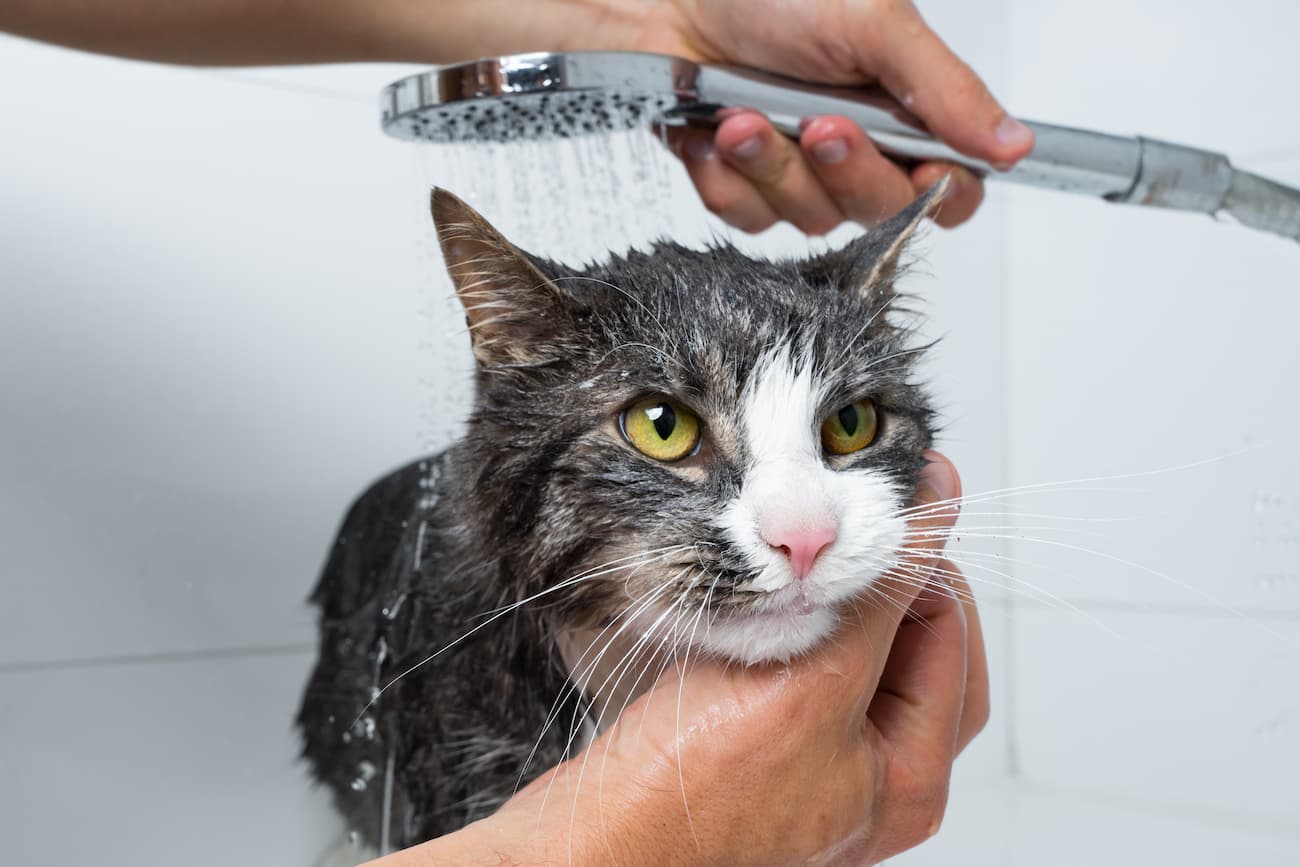Cats captivate us with their independence and innate grooming habits. One of their most admired traits is their meticulous hygiene, maintained through constant licking and self-care. However, there are certain situations where bathing a cat becomes necessary to ensure their health and wellbeing. If you’re wondering if you can bathe cats, or how to bathe a cat safely, this guide is for you.
Can you bathe cats?
Yes, you can bathe a cat, but not as frequently as dogs. So, if you are asking whether you should bathe cats, the answer depends on the individual case. Healthy cats generally stay clean on their own. Their rough tongues and saliva act like natural brushes, removing dirt and dead hair efficiently.
Still, some cats, especially those with long hair or living in dustier environments, may require regular cat showers. It’s always wise to check with your vet to determine the right bathing frequency for your cat, based on their breed, lifestyle, and overall health.
And can you bathe a kitten?
As for bathing a kitten, it’s best to wait until they’ve completed their vaccination schedule. If absolutely necessary, use kitten-specific products and ensure the water is warm and the process calm and brief. Bathing a baby cat too early can be risky since their immune systems are still developing.
Also, kittens are very sensitive to cold, so it’s crucial to keep them warm and dry them thoroughly after the bath. Beyond cleaning, proper hygiene for kittens also includes offering them quality litter. Sanicat’s litter for kittens is specially formulated to provide gentle care from day one, making it the ideal choice for your little feline’s comfort and cleanliness.
How often should you bathe a cat?
There’s no universal rule when it comes to bathing a cat, as it largely depends on their breed, lifestyle, and health needs. In general, an indoor cat that grooms regularly may only need a bath every 2 to 3 months. Outdoor cats or those prone to getting dirty may require more frequent cleaning.
Long-haired breeds like Persians or Maine Coons may need baths more often than short-haired cats because their fur tangles easily and traps more dirt. Regular brushing can help reduce the frequency of bathing by removing loose hair and surface grime.
Why don’t cats like water?
Many cats show an instinctual aversion to water, and several theories explain why cats don’t like water. One theory relates to their desert origins, where water was scarce. Another suggests that wet fur becomes heavy, affecting mobility and making cats feel more vulnerable.
Whatever the reason, it’s important to respect your cat’s discomfort. Forcing a scared or stressed cat into a bath will only reinforce their fear and make future bathing even harder.
How to bathe a cat
If bathing a cat is necessary, making the experience comfortable is key, for both of you. Here are some practical tips on how to bathe a cat safely and with less stress:
- Be prepared: Gather everything in advance, cat-specific shampoo and conditioner, towels, a container of lukewarm water, a comb or brush, and treats to reward good behavior.
- Choose a calm environment: Pick a quiet, warm, enclosed space for the cat shower. Speak to your cat gently and pet them to reassure them throughout.
- Use lukewarm water: Check the water temperature with your elbow, it should be warm but not hot.
- Avoid the head: Do not pour water over your cat’s head. Instead, use a damp cloth or cat-safe wipes to clean the face.
- Dry thoroughly: Wrap your cat in a soft towel after the bath and gently dry the fur. If your cat tolerates it, use a blow dryer on a cool setting at a safe distance.
- Offer a reward: Praise your cat and give them their favorite treat afterward. This helps associate bathing with a positive experience.
Remember, patience and empathy are key when bathing a cat. If your cat shows signs of distress, it’s best to stop and consult your vet for advice.

